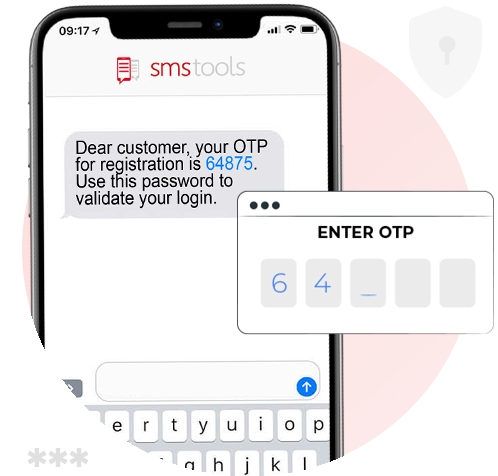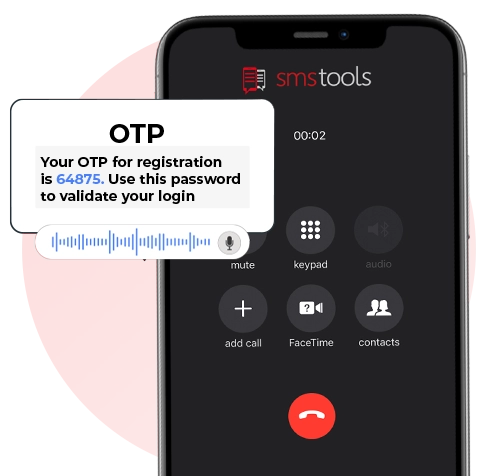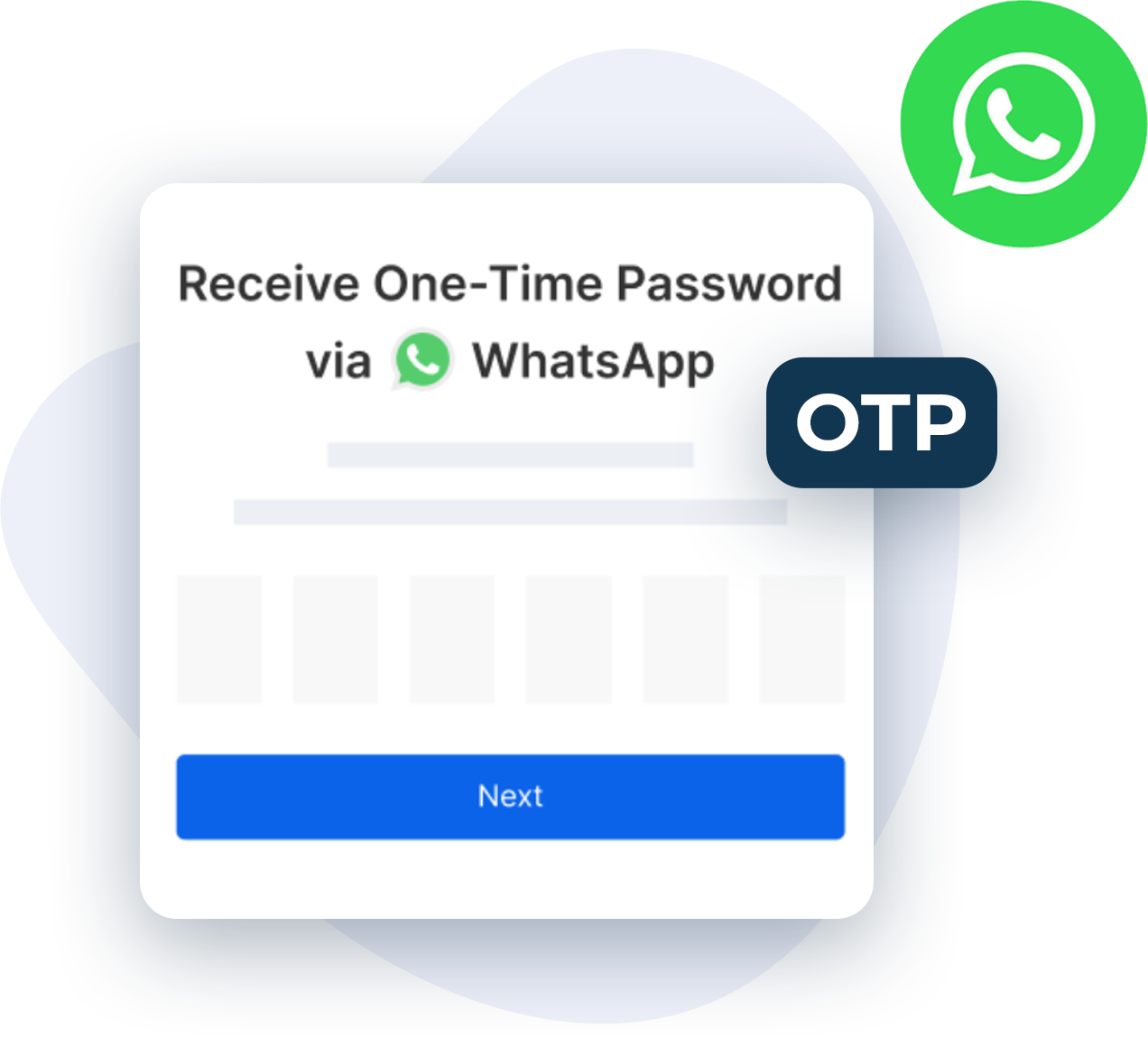Password Temporanea
Usa la nostra autenticazione OTP tramite SMS o Voce per tenere al sicuro i tuoi dati, account e transazioni degli utenti attraverso l’autenticazione a due fattori API.
Cos’è una OTP (One Time Password: Password Temporanea)?
Soltanto una password non è più abbastanza sicura ormai. Proteggi i tuoi clienti da accessi non autorizzati con l’Autenticazione a Due Fattori (2FA) o una Password Temporanea (One Time Password).
Una Password Temporanea è una serie di lettere o numeri che sono automaticamente generati per un singolo tentativo di accesso. Una Password Temporanea può essere inviata tramite SMS o Voce al telefono dell’utente ed è usata per proteggere servizi web, informazioni e dati privati.
Una OPT aggiunge un ulteriore livello di sicurezza alla tua applicazione. Gli utenti non devono più entrare identificandosi soltanto con la loro password, ma hanno anche bisogno di identificarsi con una OTP tramite un SMS o un Vocale.
Password Temporanea tramite SMS
Con un tasso di apertura del 98% entro 30 secondi, l’SMS è noto per la sua alta affidabilità. Inviando una password temporanea via SMS, sei sicuro di raggiungere i tuoi utenti, indipendentemente da dove si trovino. Anche offline, quando gli utenti non hanno accesso ad internet, possono comunque usare questa soluzione di autenticazione con OTP.
REGISTRATI

Password temporanea (OTP) tramite Vocale
Un’alternativa all’SMS è un messaggio Vocale. Con Voice, la password viene ricevuta come una telefonata dal cellulare dell’utente. Puoi anche usare Voice come soluzione se l’SMS non è stato consegnato.
REGISTRATI
Password monouso tramite WhatsApp
Quando si tratta di proteggere account online, le password monouso (OTP) sono fondamentali. Molte aziende si affidano agli OTP per garantire che solo gli utenti autorizzati abbiano accesso ai propri account. Di solito, questi messaggi vengono inviati tramite SMS, ma possono anche essere inviati tramite WhatsApp.
Con gli OTP di WhatsApp, un codice univoco viene inviato al numero di telefono WhatsApp registrato dell'utente. È un modo rapido, semplice e sicuro per verificare la propria identità ed effettuare transazioni.

Unisciti ad oltre 10.000 clienti felici
<?php $ch = curl_init(); $url = "https://api.smsgatewayapi.com/v1/message/send"; $client_id = "XXX"; // Your API key $client_secret = "YYY"; // Your API secret $data = [ 'message' => "Hello World", //Message 'to' => "393123456789", //Receiver 'sender' => "YourName" //Sender ]; curl_setopt($ch, CURLOPT_URL, "$url"); curl_setopt($ch, CURLOPT_POST, true); curl_setopt($ch, CURLOPT_RETURNTRANSFER, true); curl_setopt($ch, CURLOPT_VERBOSE, true); curl_setopt($ch, CURLOPT_HTTPHEADER, [ "X-Client-Id: $client_id", "X-Client-Secret: $client_secret", "Content-Type: application/json", ]); curl_setopt($ch, CURLOPT_POSTFIELDS, json_encode($data)); $response = curl_exec($ch); ?>
Sms gateway API Italia
Con il nostro API SMS puoi estendere il tuo software con una integrazione SMS. Integrare il nostro API SMS è molto semplice, così puoi rapidamente connettere il tuo sito web o il tuo software alla nostra potente piattaforma SMS
documentazione API





